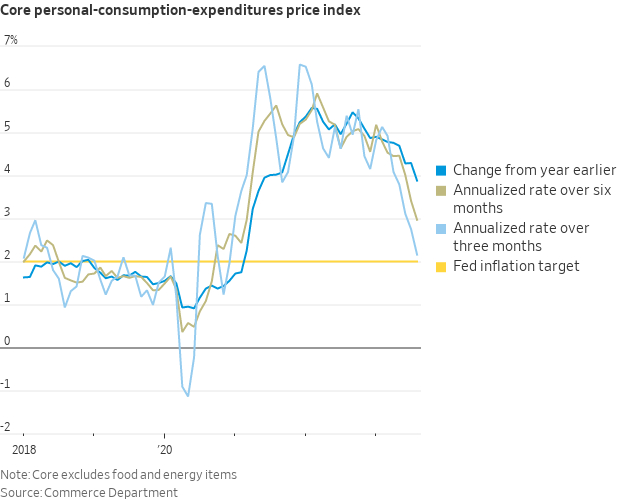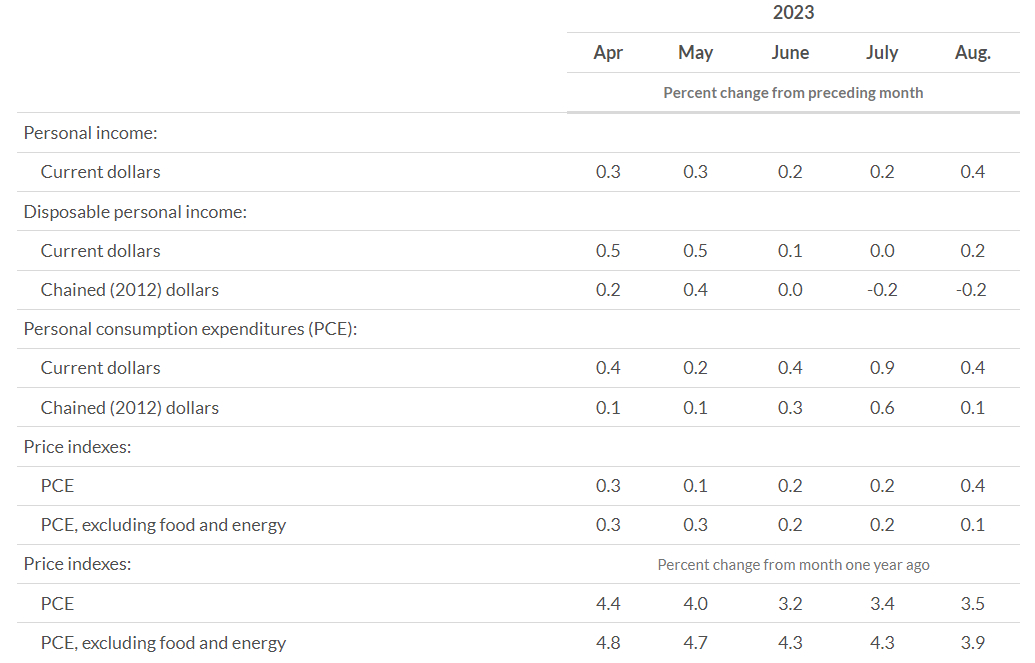According to data released today by the U.S. Burea of Economic Analysis (BEA), the Federal Reserve’s preferred metric for inflation, known as the core personal-consumption expenditures (PCE) price index, showed a decrease in August.
The PCE report was released amid growing concerns about inflationary pressures that could prompt the Federal Reserve to adjust interest rates.
The core PCE inflation index rose by 3.9% year-over-year in August, a decrease from the revised 4.3% in July, as forecasted by economists. Monthly, the core PCE deflator increased by 0.1%, falling short of the anticipated 0.2% and down from July’s 0.2% increase.
PCE Inflation Metrics and Market Reaction
The year-over-year increase in the PCE stands below 4% for the first time since September 2021. This decline has been viewed as a positive development by investors who were already in buying mode this morning prior to the release of the inflation data. Dow Jones Industrial Average futures rose by 200 points, or 0.6%, a 30-point jump from levels before the inflation data was publicized.

On the other hand, the market has been jittery for over a week following the Federal Reserve’s latest monetary policy announcement on September 20.
Although the central bank decided to hold interest rates steady, it hinted at the possibility of rate hikes to control inflation, leading to a decline in stock prices and a surge in bond yields. The yield on the 10-year Treasury note rose to more than 4.6%, the highest level since 2007.
Tom Essaye, the founder of Sevens Report Research, commented on the issue to Barron’s.
“Powell referred to recent inflation reports as ‘good’ at last week’s press conference but he said more were needed before the Fed can fully admit it’s pausing rate hikes,” he said.
The decline in core PCE could serve as another ‘good’ report that might ease some of the Federal Reserve-induced market anxiety.
The Impact of Essential Needs on August’s Inflation Numbers
In August, inflation rose by 0.4% as indicated by the PCE price index, based on the report.
While a 0.4% uptick in consumer spending can be considered positive for the U.S. economy, the nature of the spending this time is worth noting. Americans allocated more funds to essential needs like gas, housing, utilities, and medical care rather than discretionary items such as dining out, high-end clothing, and vacations.

Headline PCE, which includes volatile components like food and energy prices, reported a 3.5% increase year-over-year—its highest level since May.
Energy prices, in particular, surged by 6.1% from July, making it the largest contributor to the rise in PCE. The price of West Texas Intermediate crude oil, the benchmark for the U.S. market, reached its highest level in over a year, indicating that inflationary pressures may persist.
While the dip in August’s core PCE inflation may offer a momentary respite, it doesn’t provide a definitive answer to the Federal Reserve’s future course of action. With energy prices on the rise and lingering concerns about inflation, the central bank faces a complex set of variables as it considers potential interest rate adjustments.
https://cryptonews.com/news/august-pce-inflation-data-federal-reserves-key-measure-dips-easing-market-concerns.htm



